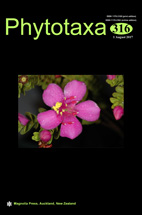Abstract
Molecular and morphological phylogenetic analyses indicate that many of the perennial endemic genera of North American Apiaceae are either polyphyletic or nested within paraphyletic groups. In light of these results, taxonomic changes are needed to ensure that ongoing efforts to prepare state, regional, and continental floristic treatments of Apiaceae reflect recent findings. Thus, six new combinations are made to accommodate the movement of five taxa from their current assignment into the genus Lomatium and the elevation of one variety of Lomatium to the level of species; Lomatium lithosolamans, Lomatium tenuissimum, Lomatium fusiformis, Lomatium linearifolium, Lomatium multifidum, and Lomatium planosum.

